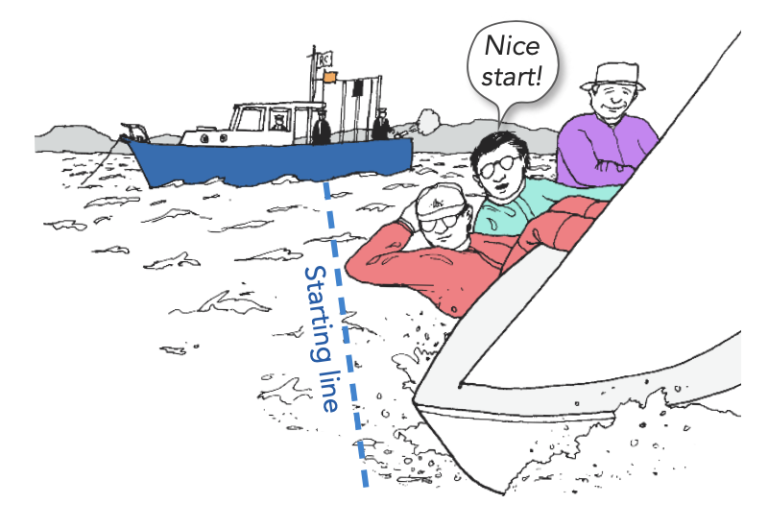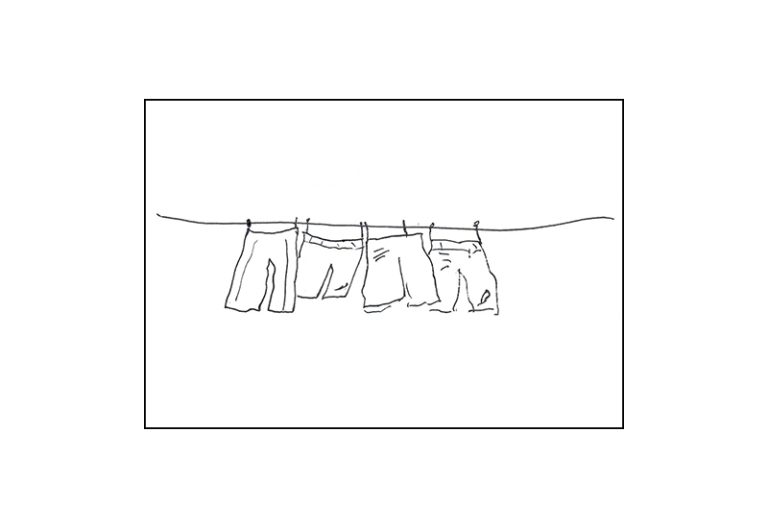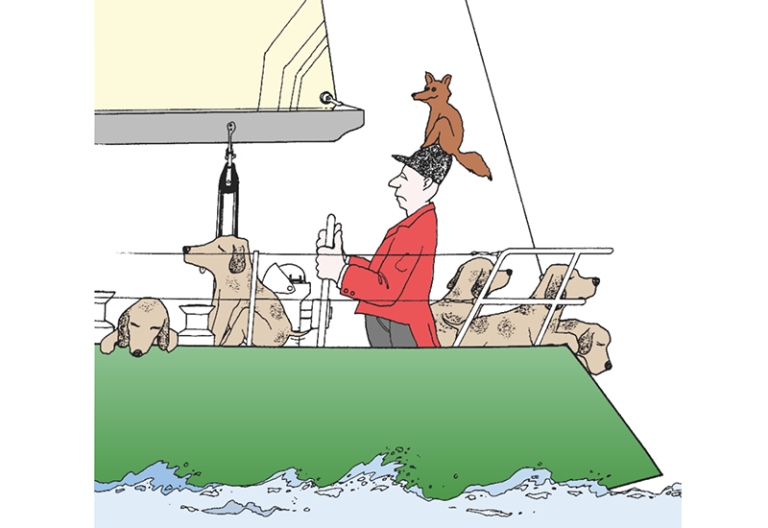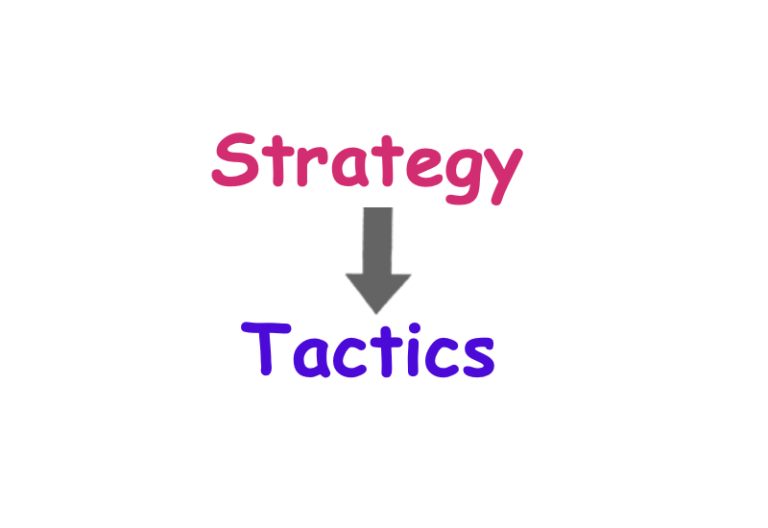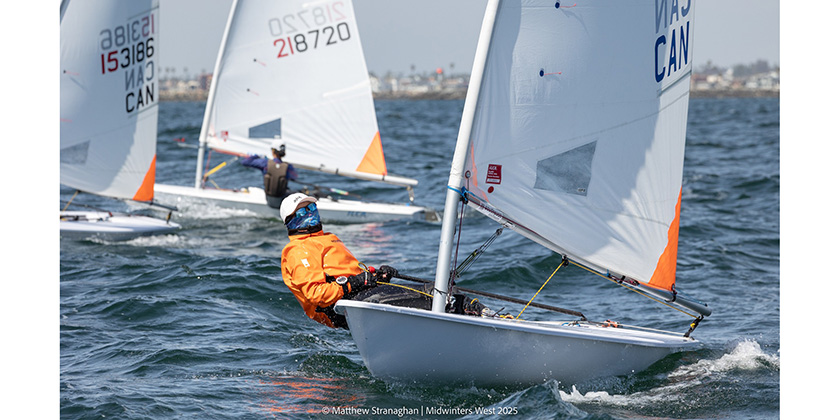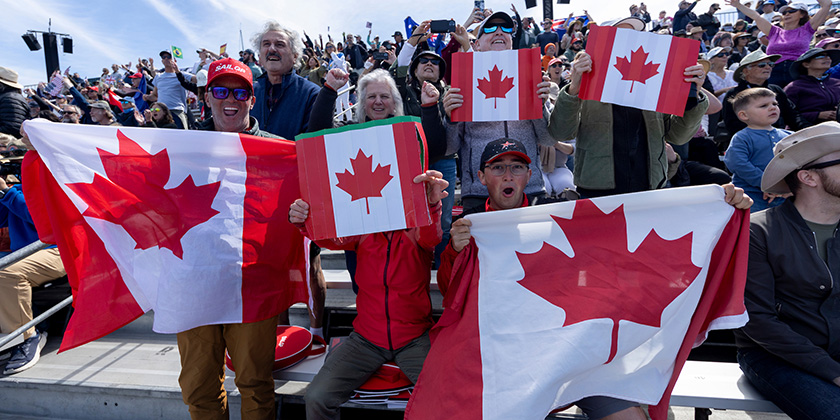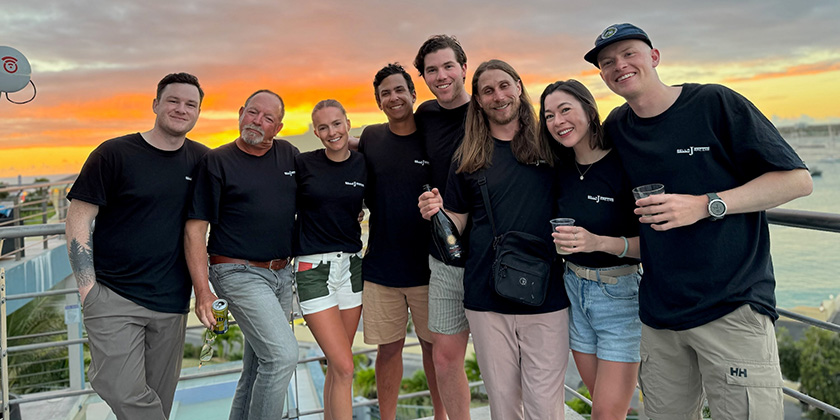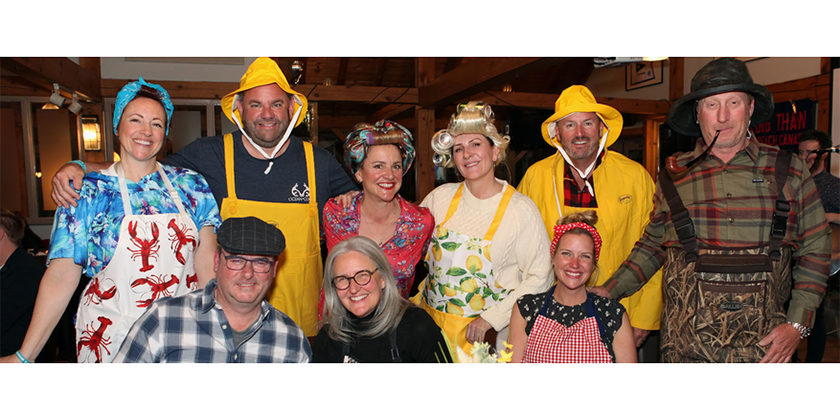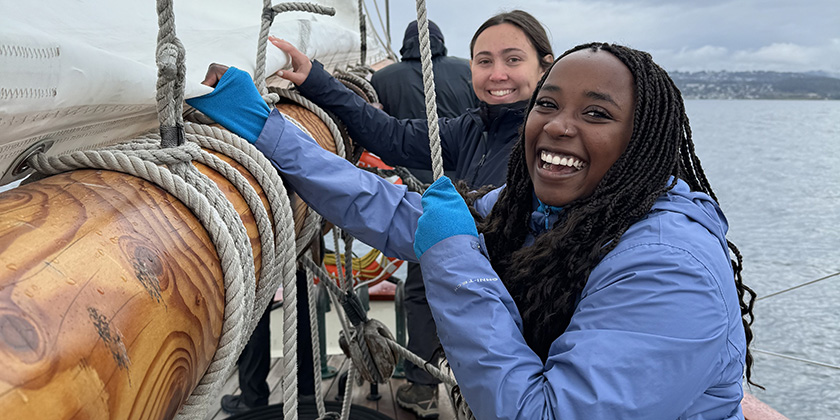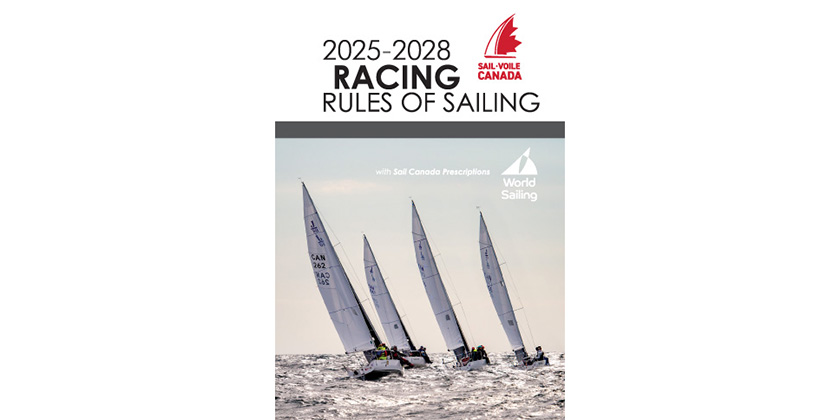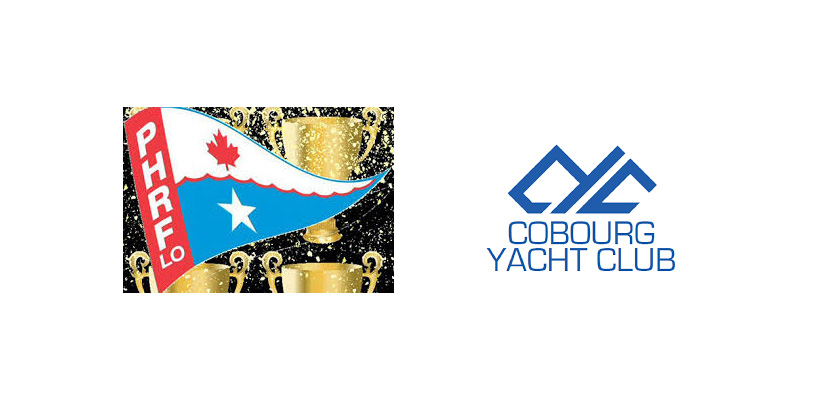Speed & Smarts: Starting Strategy & Tactics Part 2 (of several)
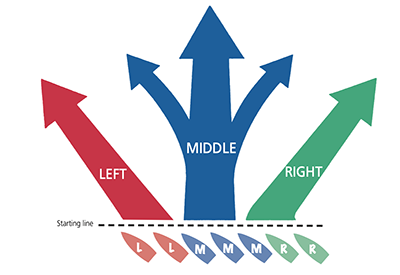
January 4, 2023
Read Part 1 HERE.
As a general rule of thumb, if you like the left side of the first beat you should start on the left side of the line. If you like the right side of the course, start on the right of the line. This may seem like a no-brainer, but it’s amazing how many boats do not follow this basic principle. Of course, this may be affected by line bias. If the pin end is very favored, for example, you might start there even if your gameplan is to go right. But most of the time your position on the line should synch up with your first-leg strategy. If you aren’t sure which way to go on the first beat, start toward the middle so you keep the option to go either way.
Go head to wind to check the line
This is a common and easy way to identify which end is farther upwind (the one closer to where your bow is pointing). It’s easier to see where your bow points if you go head to wind in the middle, and slightly to leeward, of the line. But if the starting area is busy, you may have to do this to windward of the line to avoid wind shadows. In a crowd, go head to wind from starboard tack so you have the right of way over every other boat. Take wind readings consistently from starboard tack for accurate comparison. But it’s also good to take occasional wind readings from port tack as a double check to make sure you are really going head to wind.
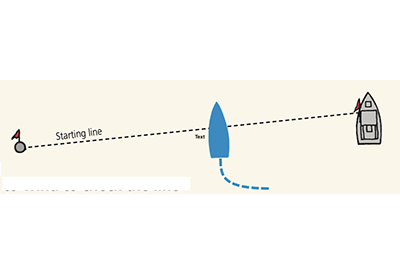 Find the end that is farther upwind
Find the end that is farther upwind
First, let’s make one thing clear: If a boat goes head to wind on the starting line and her bow is pointing closer to the pin, it does not mean that the pin end is ‘favored.’ Yes, the pin end is farther upwind than the boat end, and that might make it a better place to start, but many factors affect which end is favored.
Suppose, for example, that the wind will shift right on the first beat. Even though the pin end is farther upwind, the boat end may be ‘favored’ because the boats that start there will get to the shift first.
However, it is important to know which end is farther upwind because that could be a significant factor in your starting plan. And it’s critical to know roughly how much farther upwind that end is. Is the line bias ten degrees or just two degrees? The greater the line bias and the longer the starting line, the more of a factor this becomes in any decision of where to start.
Consider a boat that tests the starting line and finds that the committee boat is farther upwind (see Play 7). She measures the amount of line bias at 10° (which is quite a bit). In order for the pin end to be ‘favored’ (i.e., attractive enough to start there), something would have to happen on the first beat that would more than make up for the distance originally lost by boats starting at the pin. This could be a wind shift to the left of more than 10°, for example, or a significant advantage in current or wind pressure on the left side.
Before you can figure this out, you have to know which end is farther upwind and by how much. Only then can you determine whether that line bias will be the overriding factor that determines where you start.
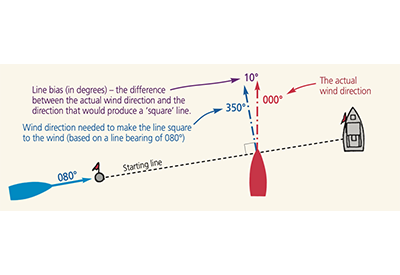 Use your compass to get accurate starting line info
Use your compass to get accurate starting line info
A compass gives you a great picture of line bias; it’s quick and doesn’t require help from another boat. You just need two things: 1) the wind direction on your compass (which you get by going head to wind); and 2) the bearing of the starting line (from either end sighting toward the other). See below for how to figure out which end is farther upwind and by how much.
Once you know the line bias in degrees, here’s a useful rule of thumb: For every 5° of bias, the advantage of starting at the upwind end (vs. the other end) is about 1/8 of the length of the starting line. In this case the boat end is 10° farther upwind, so a boat starting there would be ahead of a boat at the pin by 1/4 of the line length!
Next time: Line of Sight
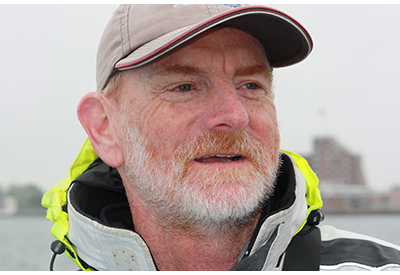 Dave Dellenbaugh is the publisher, editor and author of Speed & Smarts, the racing newsletter. He was the tactician and starting helmsman on America3 during her successful defense of the America’s Cup in 1992 and sailed in three other America’s Cup campaigns from 1986 to 2007. David is also two-time winner of the Canada’s Cup, a Lightning world champion, two-time Congressional Cup winner, seven-time Thistle national champion, three-time Prince of Wales U.S. match racing champion and past winner of the U.S. Team Racing Championship for the Hinman Trophy. He is currently a member of the US Sailing Racing Rules Committee (and was its chairman from 2005-2008).
Dave Dellenbaugh is the publisher, editor and author of Speed & Smarts, the racing newsletter. He was the tactician and starting helmsman on America3 during her successful defense of the America’s Cup in 1992 and sailed in three other America’s Cup campaigns from 1986 to 2007. David is also two-time winner of the Canada’s Cup, a Lightning world champion, two-time Congressional Cup winner, seven-time Thistle national champion, three-time Prince of Wales U.S. match racing champion and past winner of the U.S. Team Racing Championship for the Hinman Trophy. He is currently a member of the US Sailing Racing Rules Committee (and was its chairman from 2005-2008).
You can subscribe to the Speed & Smarts newsletter HERE.

